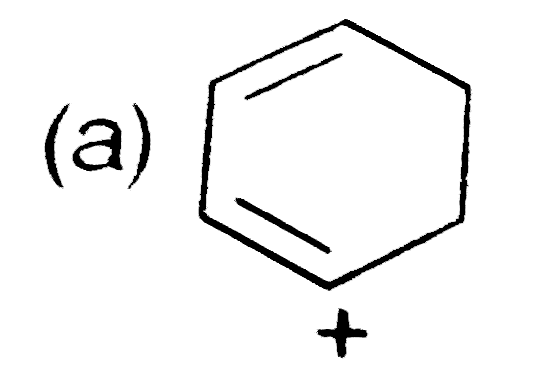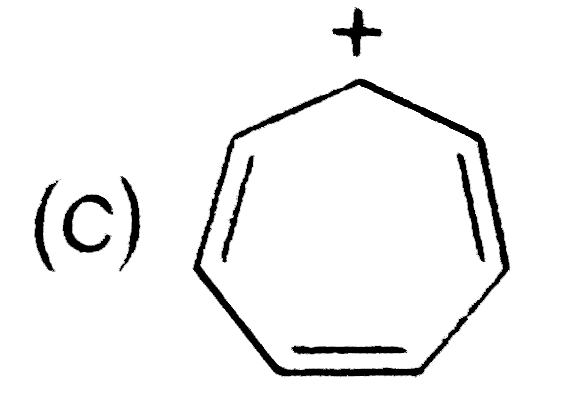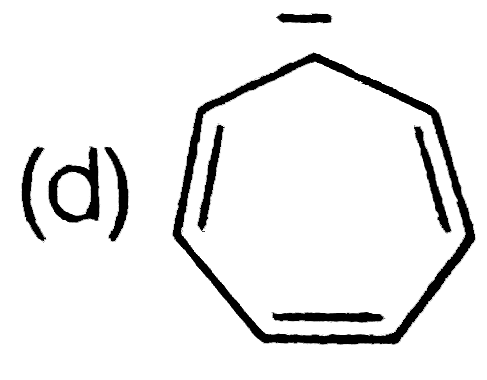Which among the following is aromatic?




The correct Answer is:A
To determine which compound among the given options is aromatic, we need to apply the criteria for aromaticity. A compound is considered aromatic if it satisfies the following conditions:
1. It must be cyclic.
2. It must be planar (flat).
3. It must have a continuous ring of p-orbitals (conjugation).
4. It must follow Hückel's rule, which states that it must have 4n+2 π electrons, where n is a non-negative integer (0, 1, 2, ...).
Let's analyze the options step by step:
Step 1: Identify the compounds
Assuming we have a list of compounds (for example, benzene, cyclobutadiene, etc.), we will analyze each one.
Step 2: Check for cyclic structure
For each compound, check if it is cyclic. If it is not cyclic, it cannot be aromatic.
Step 3: Check for planarity
Determine if the compound can be planar. If the compound cannot adopt a planar structure, it cannot be aromatic.
Step 4: Count the π electrons
Identify the π electrons in the compound. This can be done by looking at the double bonds and lone pairs that can participate in π bonding.
Step 5: Apply Hückel's rule
Using the count of π electrons, check if the number of π electrons fits the 4n+2 rule. If it does, the compound is aromatic. If it fits 4n, it is anti-aromatic, and if it does not fit either, it is non-aromatic.
Example Analysis:
- Benzene (C6H6):
- Cyclic: Yes
- Planar: Yes
- π Electrons: 6 (from 3 double bonds)
- Hückel's rule: n=1 (since 4(1)+2=6), so benzene is aromatic.
- Cyclobutadiene (C4H4):
- Cyclic: Yes
- Planar: Yes
- π Electrons: 4 (from 2 double bonds)
- Hückel's rule: n=1 (since 4(1)=4), so cyclobutadiene is anti-aromatic.
Conclusion:
After analyzing all the compounds, we can conclude which one is aromatic based on the above criteria.
2. It must be planar (flat).
3. It must have a continuous ring of p-orbitals (conjugation).
4. It must follow Hückel's rule, which states that it must have 4n+2 π electrons, where n is a non-negative integer (0, 1, 2, ...).
Assuming we have a list of compounds (for example, benzene, cyclobutadiene, etc.), we will analyze each one.
For each compound, check if it is cyclic. If it is not cyclic, it cannot be aromatic.
Determine if the compound can be planar. If the compound cannot adopt a planar structure, it cannot be aromatic.
Identify the π electrons in the compound. This can be done by looking at the double bonds and lone pairs that can participate in π bonding.
Using the count of π electrons, check if the number of π electrons fits the 4n+2 rule. If it does, the compound is aromatic. If it fits 4n, it is anti-aromatic, and if it does not fit either, it is non-aromatic.
- Benzene (C6H6):
- Cyclic: Yes
- Planar: Yes
- π Electrons: 6 (from 3 double bonds)
- Hückel's rule: n=1 (since 4(1)+2=6), so benzene is aromatic.
- Cyclic: Yes
- Planar: Yes
- π Electrons: 4 (from 2 double bonds)
- Hückel's rule: n=1 (since 4(1)=4), so cyclobutadiene is anti-aromatic.
After analyzing all the compounds, we can conclude which one is aromatic based on the above criteria.
Similar Questions
Knowledge Check
Which of the following is aromatic ?
A B
B C
C D
D
Which of the following is aromatic ?
A B
B C
C D
D
Which one of the following is not aromatic ?
ACyclopentadienyl cationBCyclooctatetraeneCCycloheptatrieneDCycloheptatrienyl cation
Which of the following is aromatic :-
View SolutionWhich of the following is aromatic ?
View SolutionAnswer 12, 13 and 14 by appropriately matching the information given in the three columns of the following table.

In which amongs the following aromatic product will not form?
View SolutionWhich of the following is/are aromatic alcohol?

View SolutionWhich of the following is an aromatic species ?
View Solution
